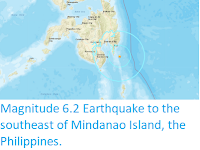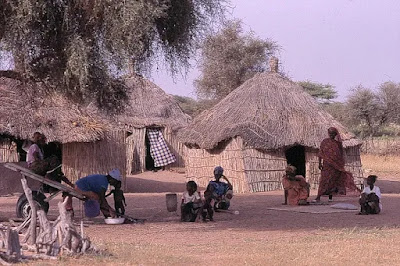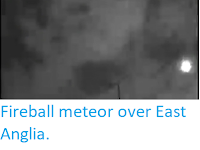Alligatoroids first appear in the fossil record during the Late Cretaceous, and by the beginning of the Palaeocene can already be divided into Alligatorines (modern Alligators, plus fossil species more closely related to them than to modern Caimans), Caimanines (modern Caimans, plus fossil species more closely related to them than to modern Alligators), and 'Basal Alligatoroids' (fossil species more closely related to modern Alligators and Caimans than to modern Crocodiles, but less closely relared to them than they are to one-another). The genus Diplocynodon is currently known from the late Palaeocene to the middle Miocene of western Europe, with nine recognised species. Alligatoroid remains from the Late Eocene Headon Hill Formation at Hordle Cliff on the coast of Hampshire, southern England, were first described in 1844 by Searles Wood, who described them as 'Alligator hantoniensis', with subsequent specimens described by the Marchioness of Hastings, Sir Richard Owen, who considered the specimens to be Crocodiles rather than Alligators and renamed them Crocodilus hastingsiae in honour of the Marchioness of Hastings, and Auguste Pomel, who recognised the species as belonging to the genus Diplocynodon and retained Wood's species name, making the species Diplocynodon hantoniensis. Many more specimens have been discovered from the Headon Hill Formation since the nineteenth century, but the species has not been redescribed for over a century and a half.
Diplocynodon hantoniensis is known only from partial and disarticulated remains, with most of the post-cranial skeleton unknown, so the precise size of the living animals is unknown. However the species is known to have a dorsal skull length of up to 375 mm and a snout length of up to 255 mm, as well as a maximum recorded skull width of 227 mm (Rio et al. do not interpret this data, but it probably suggests an maximum size of about three metres for the species).

The skull of Diplocynodon hantoniensis ( specimen NHMUK OR 30392) in dorsal (A), (B) and (C), (D) ventral view. Abbreviations: amp, scar for musculus adductor mandibulae posterior; bo, basioccipital; ch, choana; en, external naris; fr, frontal; itf, infratemporal fenestra; jg, jugal; lac, lacrimal; mef, median eustacian foramen; mx, maxilla; na, nasal; ob, orbit; oc, occlusal pit; pmx, premaxilla; pf, prefrontal; po, postorbital; qd, quadrate; qj, quadratojugal; so, supraoccipital; sq, squamosal; stf, supratemporal fenestra. Scale bar is 10 cm. Rio et al. (2019).
Diplocynodon hantoniensis is broad snouted compared to other members of the genus, with square nostrils, and a deep notch slightly behind the nostril, something present in modern Alligators but absent from most members of the genus Diplocynodon. The species has highly variable cranial ornamentation, which is typical for the genus. The ectopterygoid bone of the upper jaw extends forward, parallel to the maxillary alveoli (groove in which the teeth of the upper jaw sit), but is separated from it by the maxilla, similar to the situation in modern Caimans, whereas in other species of Diplocynodon the ectopterygoid contacts the posterior part of the maxillary alveoli.

Articulated skull and mandibles of Diplocynodon hantoniensis (specimen
NHMUK OR 30393) in dorsal (A), (B) and lateral (C), (D) view.
Abbreviations: art, articular; dt, dentary; emf, external mandibular
fenestra; en, external naris; fr, frontal; itf, infratemporal fenestra;
jg, jugal; lac, lacrimal; mx, maxilla; na, nasal; ob, orbit; pmx,
premaxilla; pf, prefrontal; pof, preotic foramen; po, postorbital; qd,
quadrate; qj, quadratojugal; so, supraoccipital; sq, squamosal; stf,
supratemporal fenestra; su, surangular. Scale bar is 5 cm. Rio et al. (2019).
All premaxillary and anterior maxillary teeth of Diplocynodon hantoniensis are conical and lingually curved, with smooth carinae (ridges), and commonly preserve faint longitudinal striations. Carinae occur on the medial and lateral edges of the anteriormost premaxillary teeth, but on the anterior and posterior edges of all other premaxillary and maxillary teeth. Posteriorly, the maxillary teeth become shorter, more globular and less lingually curved, though never becoming blunt as they retain modest carinae and pointed tips.

The dentition of Diplocynodon hantoniensis. (A)–(C) Specimen NHMUK OR 25166 in anteroventral view (A), anterolateral view, showing the premaxilla–maxilla transition (B) and lateral view showing the posterior maxillary dentition (C). (D) Specimen NHMUK OR 30317, isolated tooth from the anterior region of the dentition in mesial view; (E) – (F) unregistered isolated teeth from the posterior region of the dentition in labial view. All scale bars are 2 cm. Rio et al. (2019).
In all extant alligatorids, the squamosal and parietal bones have a large sutural contact on the posterior wall of the supratemporal fenestra (opening in the skull of Diapsids above and behind the eye), anterior to the orbitotemporal canal, whereas in other living Crocodylians the quadrate bone widely separates the squamosal and parietal, forming the floor of the orbitotemporal foramen (part of the eye socket). Diplocynodon hantoniensis was found to have an intermediate condition, in which the squamosal approaches the parietal, but a narrow wedge of the quadrate separates them, something previously seen in one other species of Diplocynodon, Diplocynodon ratelii, from the Late Eocene to Early Miocene of the Massif Central of France (which was also the first species assigned to the genus Diplocynodon).
Rio
et al. carried out a series of cladistic analysis (computerised analysis of relationships within the
group based entirely upon shared common features rather than assumed
relationships) using the
TNT (
Tree analysis using New Technology) software package. This consistently suggested that the genus Diplocynodon is valid (i.e. consists entirely of species more closely related to one-another that to anything else) and that
Diplocynodon hantoniensis should be placed within this species, though one other species currently placed within the genus,
Diplocynodon riograndensis, should probably be excluded from the genus.
A number of fossils from Europe and North America have previously been assigned to Diplocynodon hantoniensis, but Rio et al. do not feel that any of these are genuine members of the species. A single tooth and a keeled dorsal osteoderm from the early Eocene Nanjemoy Formation of Stafford County, Virginia is considered by Rio et al. to be insufficient for specific or even generic identification, and from an indeterminate Crocodylian. Five cranial fragments, a fragment of the retroarticular process and two isolated teeth from the late Eocene of Mormont in the canton of Vaud, western Switzerland, has none of the diagnostic features of either the species Diplocynodon hantoniensis or the genus Diplocynodon, so Rio et al. regard it as an indeterminate Alligatoroid. An anterior dentary fragment, a lacrimal, fragments of a left and right angular, teeth, portions of two femora and numerous osteodermal and vertebral fragments, from the early Oligocene ‘Melanian Clay’ of Altenburg IV quarry at Borken, in Hesse, central Germany, show features that allow it to be assigned to the genus Diplocynodon but not to a specific species, as does relatively complete skull from early Oligocene sediments in the Razac-d’Eymet commune in Dordogne, south-western France.
See also...
















































